CX Midwest 2025: Customer Experience Is Everyone’s Job
CX Midwest might be a national event, but we don’t build it like one. We build it to feel like the most useful, invite-only working session you’ve ever been a part of. And this year, we leveled up.
We brought together over 100 brands—executives, marketers, operators and technologists—ready to stop spinning and start moving. And from the jump, we built this year’s summit around one core belief: If your company still thinks CX is only marketing’s job, you’re not going to grow.
Every session was designed to show what happens when enterprise teams break down silos and come together around the customer.
- Panels dug into the organizational blockers that stall real progress.
- BOLDtalks from brands like McDonald’s, Lands’ End and Intuit TurboTax pulled back the curtain on what CX looks like when it’s operationalized across an entire business.
- The keynotes challenged us to rethink how teams lead, measure and align around the customer.
- And let’s be honest—when Mike Grahl, CMO of the Minnesota Timberwolves, steps on stage during the NBA playoffs to talk about loyalty, fandom and high-stakes CX, the room pays attention.
These moments reflected what we heard again and again: Growth doesn’t happen in silos. CX can’t live inside one team—it has to be built into how the business thinks, operates and delivers, end to end.
Whether you were in the room or catching up now, these are the six takeaways worth bringing back to your team—and putting to work.
KEY LESSONS WE LEARNED
Lesson 1 →
If you’re still structured around functions, not journeys, you’re slowing down growth and customer trust.
Lesson 2 →
There is no AI silver bullet.
Lesson 3 →
The most effective personalization reduces effort.
Lesson 4 →
Data-steeped personas beat generic archetypes. Every Time.
Lesson 5 →
The C-suite doesn’t need convincing. They need conversion.
Lesson 6 →
Stories stick because they trigger emotion—and emotion drives decisions.
LESSON 1
If you’re still structured around functions, not journeys, you’re slowing down growth and customer trust.
If your internal systems aren’t designed around your customer, even the best experience strategy won’t deliver.
What We Learned
Margaret Murphy, CEO and founder of Bold Orange, opened CX Midwest with a reality check: growth depends on how well every function is connected to deliver value across the customer journey. Yet most orgs still chase growth in vertical silos. Teams, tools and priorities are split by function. And that means the customer experience breaks in ways you can’t see until it’s too late.
We heard it across sessions: growth happens when you build horizontally across the journey—with integrated strategy, shared data, connected systems and content that actually moves people forward.
That theme echoed across sessions and came to life during our Connected CX panel, where leaders from Subaru, Synchrony, Tailored Brands, and Aveda shared what transformation really takes.
“Every single person that touches the partner has a seat at the table …” – Anne Klein, SVP & GM, Synchrony
“We’ve reshuffled our teams to be more end-to-end … That’s powerful as you start to engage cross-functional teams.” – Sarah Pitts, Director Customer Engagement, Aveda
“We’ve started to have a lot more cross collaborations … features being designed on the vehicle side that connect to the app. They can feel really broken when we’re not working together.” – Amy Sgrignoli, VP Connected Vehicle Business, Subaru
“Clienteling at-scale should always feel like the touch of the founder … Whether you’re online or in-store, someone recognizes that you already started building a cart or purchased that blue suit.” – Whit Alexander, EVP & Chief Customer Officer, Tailored Brands

The common thread? Integrated CX happens by design, not by default. These brands are re-architecting how they work: horizontally across teams, with shared data and decisions centered on the customer.
What To Try
You’re not rebuilding the org overnight. Just move one experience from siloed to connected.
- Choose a high-impact moment—onboarding, checkout, service recovery, etc.
- Bring in the teams that own it, then run a 20-minute audit using these 4 prompts:
- Strategy: Are we solving the same customer goal?
- Data: Are we seeing the same thing?
- Systems: Where do things break?
- Content: Are we helping—or confusing?
End by agreeing on one fix. Assign it. Measure what moves.
LESSON 2
There is no AI silver bullet.
But when AI is built into internal processes—think customer journey design, research or prototyping—it can unlock serious impact.
What We Learned
Across both the McDonald’s BOLDtalk and Nikolas Badminton’s keynote, one truth emerged clearly: AI itself doesn’t drive transformation, but how organizations leverage it does.
McDonald’s didn’t show off flashy AI or expensive tools. Danny Ryback, Innovation Lead at McDonald’s, showed us how AI lives inside their internal innovation engine—powering everything from research synthesis to prototype design. When paired with design thinking, AI helps them move faster, test smarter and scale better. But it only works because it’s structured and intentional.
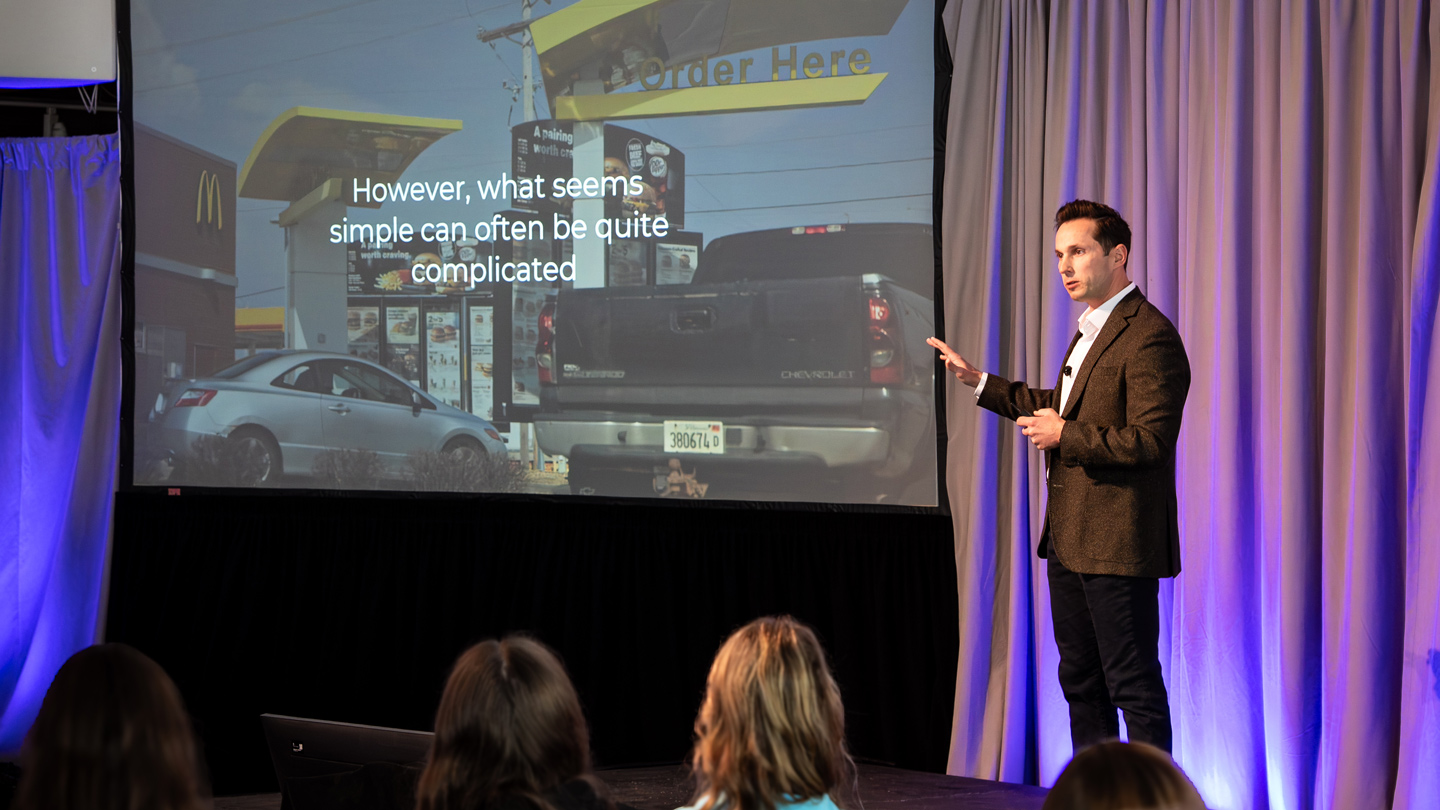
Nikolas Badminton, Futurist and author of “Facing Our Futures,”, backed that up with a bigger view: The companies who win in an AI-enabled future won’t be the ones who adopt tech the fastest. They’ll be the ones who combine imagination, human insight and operational readiness to make it deliver.

What To Try
Don’t chase the shiny thing. Embed AI where it can reduce friction and increase speed.
- Identify one slow spot in your internal workflow—customer research, campaign planning, prototyping, etc.
- Run a quick sprint using the McDonald’s framework. Use AI to:
- Summarize inputs (think surveys, interviews, feedback)
- Ideate fast (generate concepts, naming options or content blocks)
- Prototype small (AI-assisted visuals, flows or copy)
- Test and learn (what saves time, what improves clarity?)
Start with one use case. Build the muscle. Then scale it.
LESSON 3
The most effective personalization reduces effort.
With the right strategy, personalization becomes intuitive, relevant and (maybe) even joyful.
What We Learned
Personalization has gotten messy—overproduced content, fragmented tech stacks, too many “Hi, [First Name]” moments that don’t actually help customers do anything.
Intuit TurboTax cut through the noise by reframing personalization as effort reduction. They’ve approached their CRM strategy to be about utility, not add-on martech features. Nick Karvounis, CRM innovation and automation lead at Intuit TurboTax, said it plainly:
- What does the customer need to do next?
- And how do we make that easier?
The TurboTax “Year in Review” campaign is a perfect example of how personalization can perform when it guides a customer. Beyond email, the post-auth push notifications didn’t focus on reminders, they were progress nudges to move the customer to completion. And the results? They saw a 130% lift in engagement by making messages more helpful, not more personalized.
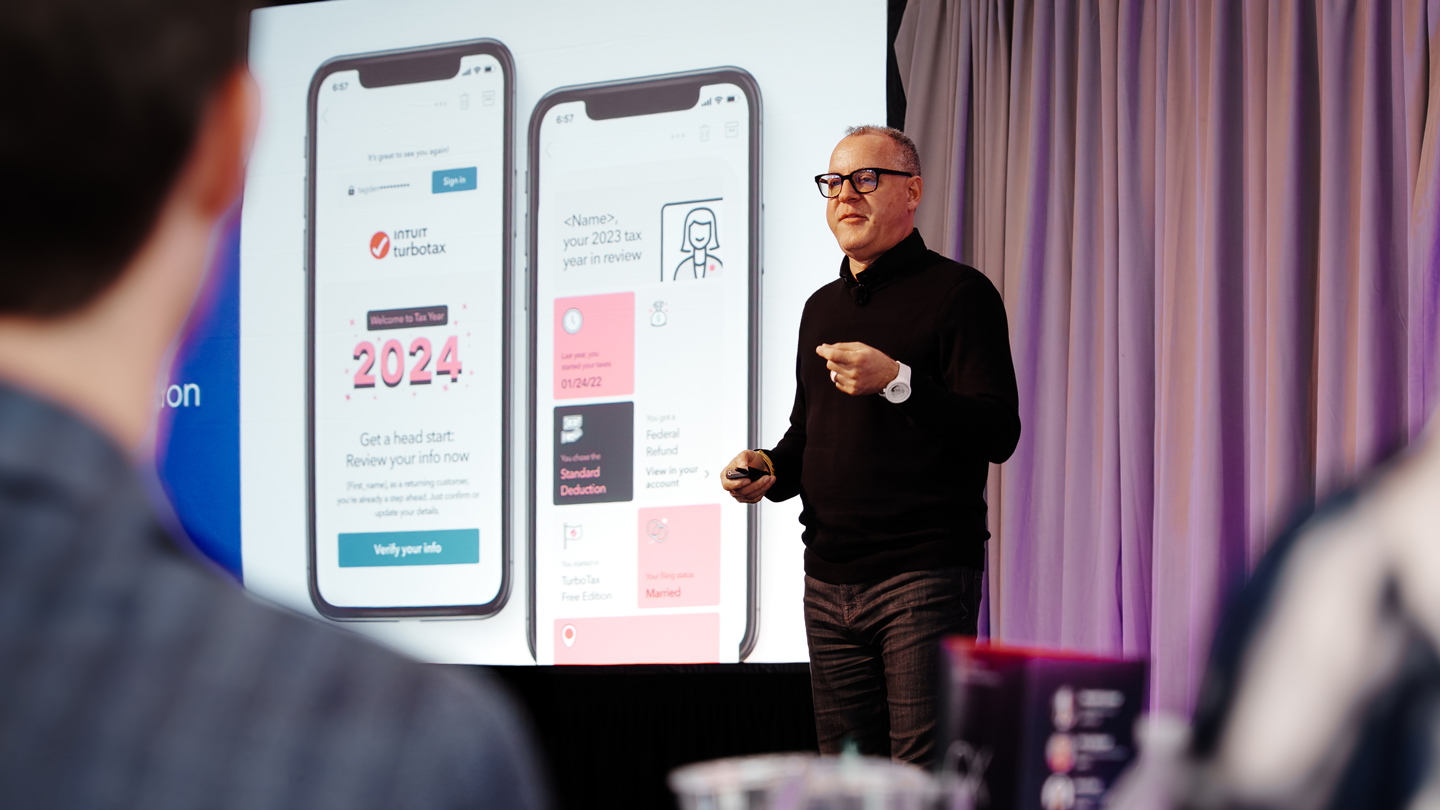
This was the reminder we all needed: Personalization is not about branding or content volume. It’s a tool for reducing friction.
What To Try
Audit one customer journey—like onboarding, renewal or reactivation—and run it through this filter:
- Where is customer effort high?
- Where do people drop off, get confused or pause?
- What signals do you already have?
- Past behaviors, product usage, preferences, drop-off points?
- Where can we prefill, automate or remove a step?
- Would that help them move faster?
- Does the content reduce friction—or just sound smart?
- Rewrite one message to be more helpful than clever.
Then test one variation. Measure if action, completion or satisfaction improves.
LESSON 4
Data-steeped personas beat generic archetypes. Every time.
Combining behavioral, marketing and outcome data helps you understand not just what customers do—but why they do it.
What We Learned
Most brands have personas. But too often, they’re built on static attributes and don’t reflect how customers actually behave.
Lands’ End knew they could do better. Justin Tidmarsh, vice president of integrated marketing, and Meredith Ginther, senior manager of analytics at Lands’ End, pulled back the curtain how they partnered with Bold Orange to evolve their segmentation model into something more powerful.
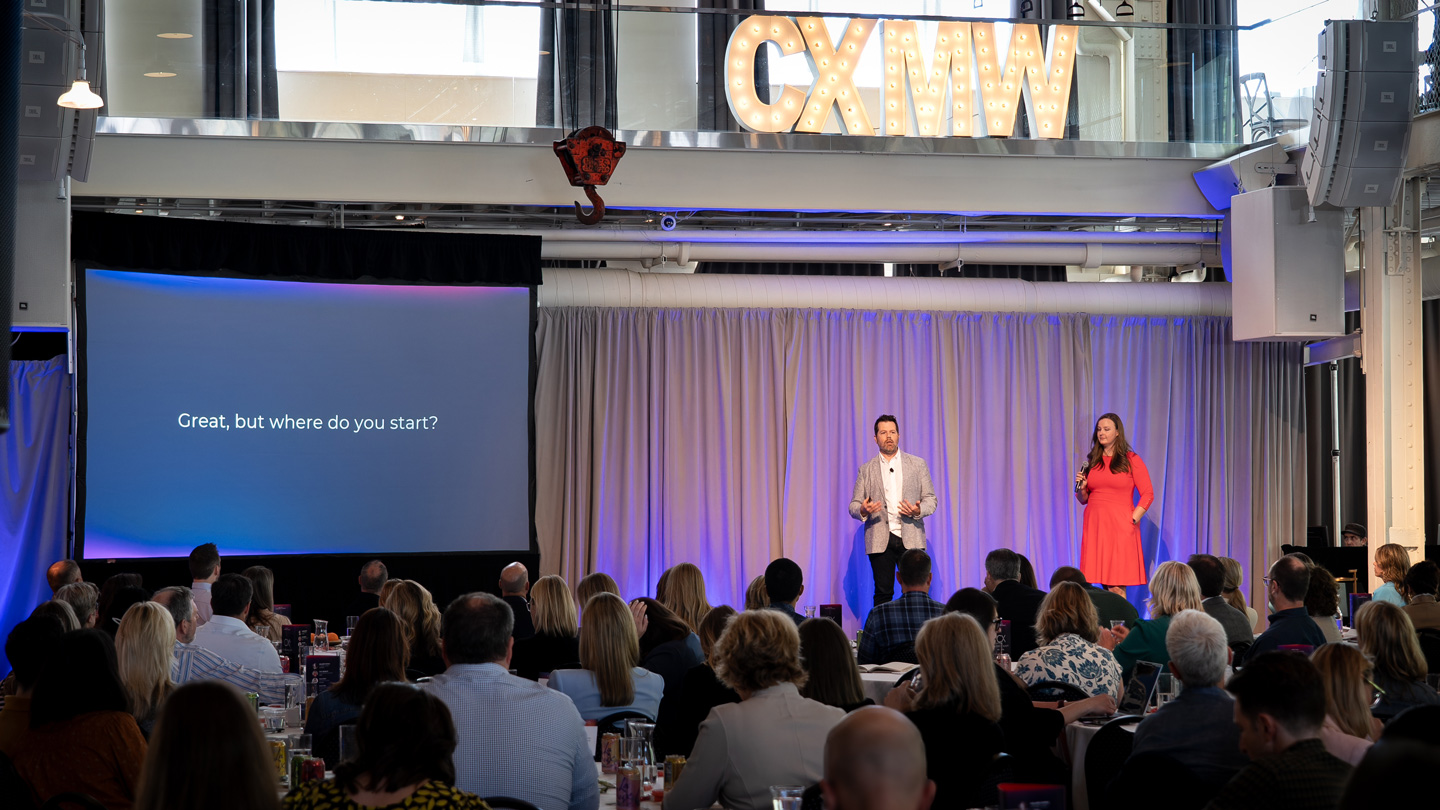
By combining behavioral signals, marketing engagement and outcome data—like LTV and discount sensitivity—they created segments that not only described their customers, but helped predict how they’d respond.
And it paid off. One of the most effective outputs of this work was a decile model that ranked customers by discount sensitivity—allowing the team to scale back offers without sacrificing conversion (and margin).
That mindset shift—from static insights to dynamic action—is what turned good segmentation into measurable business impact. And in true Lands’ End fashion, they ground it all in a simple, human mantra from their founder:
“Take care of the customer, take care of the employee and the rest will take care of itself.”
What To Try
Pick a persona. Then put it through a performance filter:
- Does this segment tie to actual behavior?
- Can we measure business impact—like margin, CLV or offer response?
- Can we activate it differently than another segment?
If not, it’s a placeholder. If yes, build a test:
- Try one targeted message, one differentiated offer or one tailored journey step.
- Compare performance to your default approach.
LESSON 5
The C-suite doesn’t need convincing. They need conversion.
Tie your work to outcomes leadership already cares about—retention, margin, cost to serve—and they’ll pay attention.
What We Learned
Executives already believe in customer experience. What they’re looking for now are sharper, more focused strategies that show how CX drives growth, efficiency and long-term value.
That’s why we brought together a powerhouse panel of C-suite leaders—a president, CMO, CFO and Chief Customer Officer to share how they evaluate CX investments, navigate cross-functional alignment and turn customer insights into enterprise results.
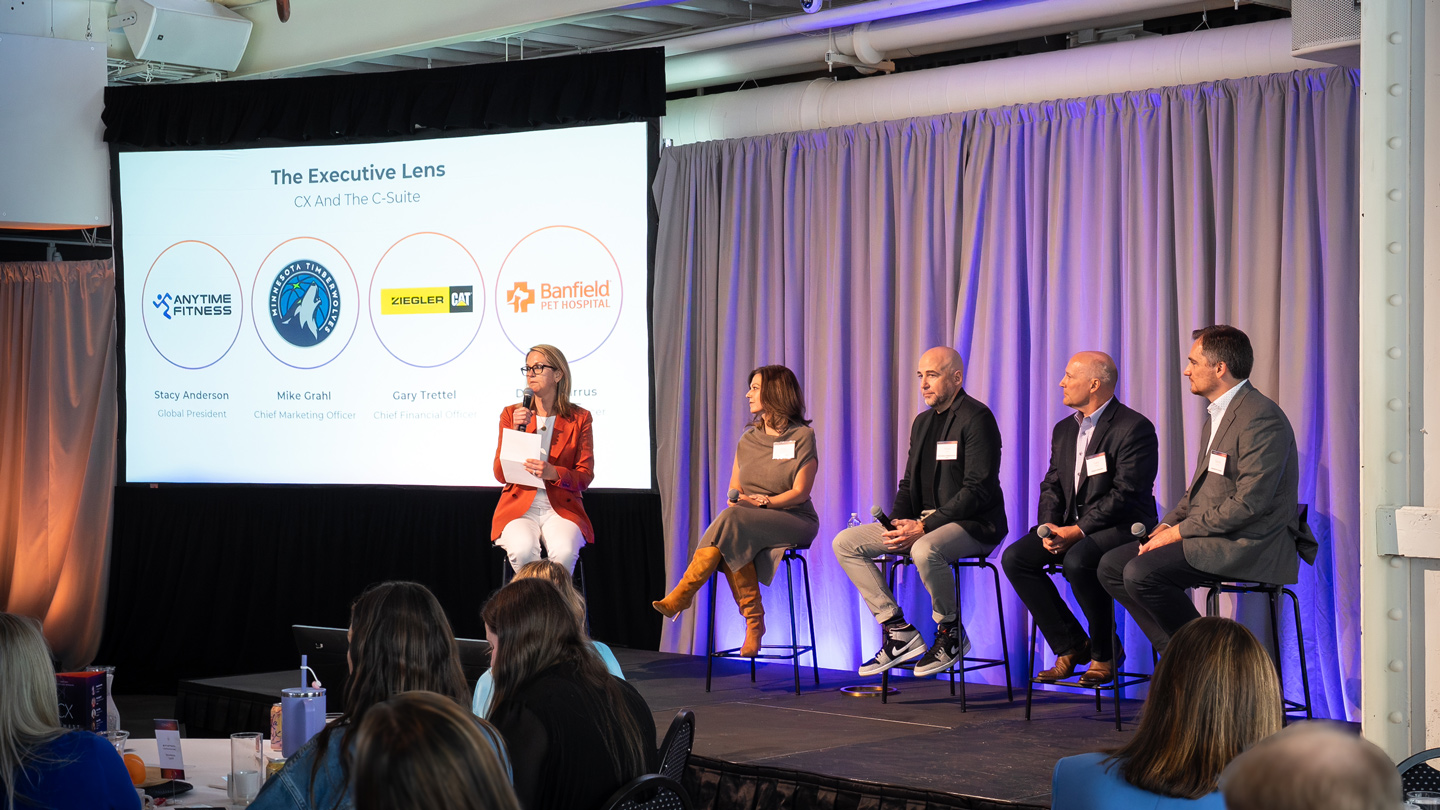
Featured Panelists:
-
Stacy Anderson, Global President, Anytime Fitness
-
Mike Grahl, Chief Marketing Officer, Minnesota Timberwolves & Lynx
-
Gary Trettel, Chief Financial Officer, Ziegler Caterpillar & Ziegler Companies
- David Sturrus, Chief Client Officer, Banfield Pet Hospital
Their conversation pulled back the curtain on how decisions actually get made at the top:
- Finance looks for measurable ROI and a path to profitability.
- Marketing champions CX as a growth driver—but knows it can’t stand alone.
- Operations focuses on consistency and scale, not just one-off wins.
- Customer leaders advocate for empathy but know it must be tied to data and outcomes.
Together, they made one thing clear: If you want executive backing, you have to speak their language—linking customer outcomes to business priorities and creating space for shared ownership across the C-suite.
What To Try
Use this exec checklist to pressure-test your next CX pitch, roadshow or internal strategy doc:
- Can I tie this to a business priority?
→ Retention, LTV, cost to serve, conversion velocity - Do I have a short-term traction metric?
→ Drop-off reduction, engagement lift, NPS bump, support volume drop - Have I shown how this benefits the customer?
→ Lead with empathy, land with measurable impact - Do I explain how this pays for itself?
→ Even directionally—what it offsets, streamlines, or accelerates - Am I speaking their language?
→ Use phrases like “growth lever,” “operational efficiency,” “pipeline impact”—not just “awareness” or “engagement” - Have I made space for co-creation?
→ Execs want to shape the plan, not just approve it. Invite them in early.
Frame it in outcomes. Invite collaboration. And lead with clarity, not just conviction.
LESSON 6
Stories stick because they trigger emotion—and emotion drives decisions.
Want people to act, align or remember? Structure your message like a story.
What We Learned
There’s real neuroscience behind why stories work. They activate chemicals like dopamine, oxytocin and endorphins—fueling emotion, memory and motivation. That’s why we remember a great campaign but forget the slide with 10 bullets.
Matthew Luhn, a Pixar veteran, showed us that storytelling is a framework for influence. Humans decide emotionally, then justify logically—which means if you want your strategy to stick, it needs to make people feel something first.
“People make emotional decisions in 90 seconds or less. The logic comes after.”
Matthew Luhn
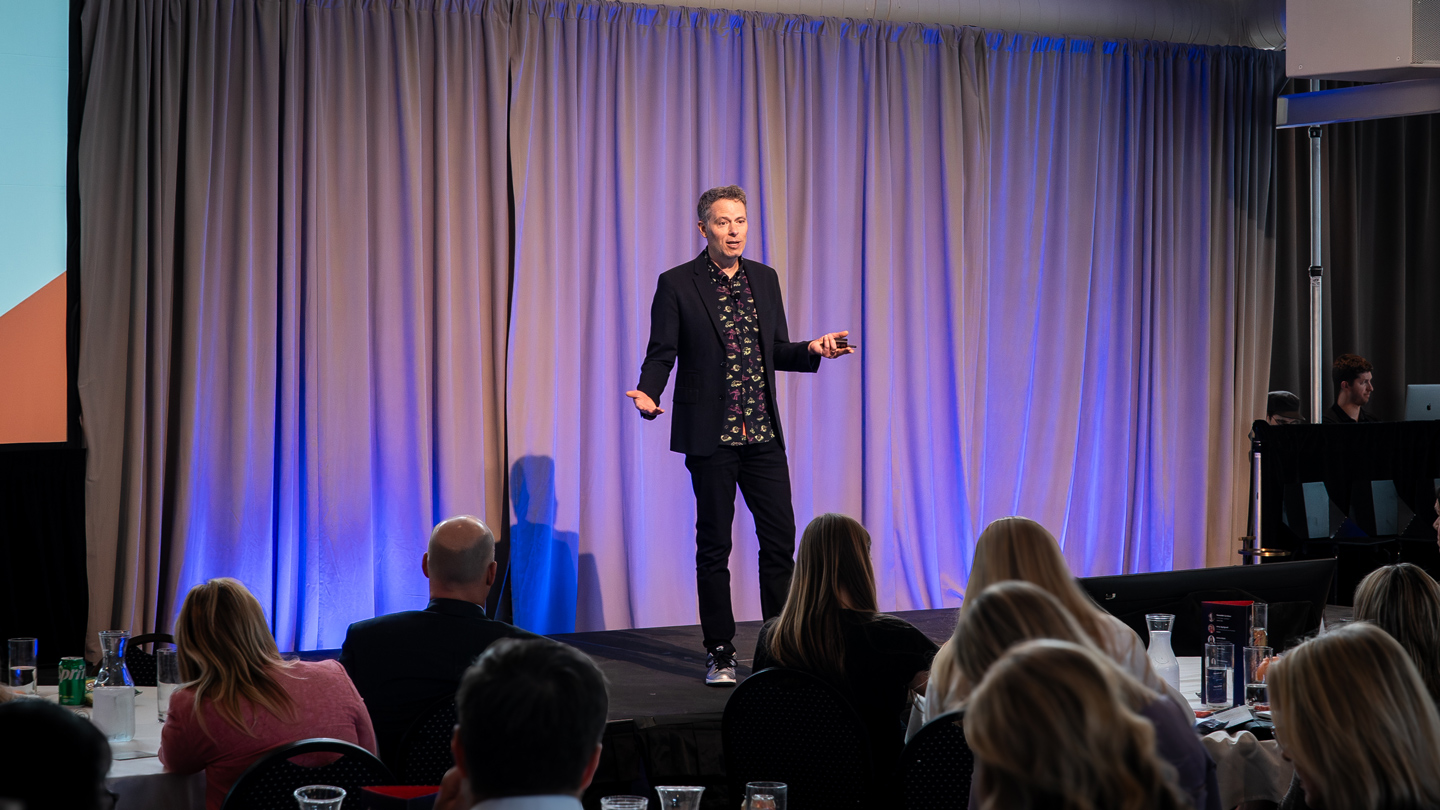
Intuit TurboTax proved this in action. Their top-performing CRM campaign told a story; it wasn’t just performative personalization. The “Year in Review” email recapped a customer’s year, showed them what they accomplished and teed up what to do next. It sparked emotion, created clarity and moved customers forward.
What To Try
Reframe your next CX pitch, campaign or internal strategy using this simple 3-part story arc:
- Hook – What’s at stake? Set the problem clearly.
- Tension – What’s blocking success? Build urgency.
- Resolution – What’s the shift—and why does it matter?
Or try Luhn’s Pixar-style Story Spine to really structure alignment:
Once upon a time …
And every day …
Until one day …
And because of that …
And because of that …
And because of that …
Until finally …
And since that day …
And the moral of the story is …
Apply it to a deck. An email. A campaign message. Then watch how much more people remember—and act on it.
Final Thought
Every brand in that room shared the same challenge: complexity, fragmentation and elevated expectations. But the ones making real moves showed us they are not waiting for perfect orgs or seamless tech stacks. They’re building momentum—horizontally, strategically and with a hell of a lot more clarity.
So, pick one of these six. Run a test. Rally your team. Measure what moves. Then go do more of it.
Let’s build CX that actually delivers.


